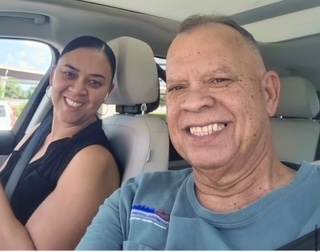Decisions about care through the end of life are deeply influenced by cultural and religious traditions, shaping how families navigate grief and honor their loved ones.
When my uncle recently passed away, my family instinctively turned to Catholic rituals, despite our complex relationship with the faith. My two teenage daughters, who do not attend church, participated in a prayer with me. They observed how these rituals shaped our family’s grief. For my daughters, these experiences weren’t just about faith. They were about witnessing how rituals provide structure and meaning during grief, even if one’s personal beliefs evolve over time.
One evening, as we lit a candle and recited prayers, my older daughter asked, “If we don’t believe in all of this, why are we doing it?” It was a question I had asked myself many times.
I told her, “Because it’s not just about belief, it’s about belonging — about honoring a history that shaped us, even if we’ve evolved beyond it.”
Continuing Customs
Customs among Latin American Catholic immigrant families like ours blend religious traditions with cultural heritage. For example:
- Last Rites (Anointing of the Sick): A sacrament administered to the dying, often seen as essential for ensuring a peaceful transition into the afterlife. Families may call a priest at the last moment, even if the person was not a practicing Catholic.
- Novenas and Rosary Prayers: Nine days of prayer following a death, bringing families and communities together to honor the departed.
- Day of the Dead (Día de los Muertos): While not strictly Catholic, this cultural celebration blends Indigenous and Catholic elements, emphasizing the importance of remembering ancestors through ofrendas (altars) and prayers. Many people know it is observed in Mexico. It is also celebrated in other Spanish speaking countries in Latin America and the Caribbean.
- Funeral Mass and Repatriation of Remains: Many immigrants express a desire to be buried in their homeland, leading families to navigate both logistical and emotional challenges in honoring these wishes.
- Mourning Attire and Symbolism: In Dominican and other Latino traditions, widows may wear black for extended periods, while homes are adorned with candles and religious images.
- Vigils and Wake Ceremonies: These gatherings often include prayers, storytelling, and communal meals, reinforcing social bonds while honoring the deceased.
Catholicism Beyond the Pew: Stories from Washington Heights
In Washington Heights, where Dominican and other Latino immigrant communities are deeply rooted, Catholic traditions surrounding death persist, even among those who no longer actively practice the faith. Two stories stand out in my mind, highlighting the deep cultural and ethical dimensions of end-of-life rituals.
A Son’s Promise: “We Had to Give Her the Last Rites”
A middle-aged Dominican man I spoke with shared the story of his mother’s passing. She had not attended Mass in years, but as her health declined, the family debated whether to call a priest for the Last Rites. “She always said she wasn’t religious anymore,” he told me, “But when she got sick, she held onto her rosary. I couldn’t let her go without it. We had to give her the Last Rites. It was what she would have wanted, even if she never said it out loud.”
This conversation reflects an unspoken understanding within many immigrant families: religious identity is often more cultural than theological. Even when someone distances themselves from the Church, their family may still turn to Catholic rituals for comfort, continuity, and closure.
The Novena That Brought Us Together
Another family described how they gathered for a nine-day novena after their father’s death. None of the siblings were practicing Catholics, but they followed the tradition because their grandmother insisted. “It wasn’t about church,” one daughter explained, “it was about keeping our family together in grief.” The structured prayers and nightly gatherings became an unexpected source of healing. What began as a duty transformed into a communal space for mourning, storytelling, and reconnection.
My personal experience mirrors these community stories. For my daughters, experiences with Catholic rituals provided a unique insight into their cultural inheritance. While they may not choose to continue these traditions in the same way, they witnessed how rituals can provide a framework for collective mourning and a tangible expression of love and respect for the departed.
Danurys Didi Sanchez MS, Founder, Communities for Responsible Bioethics, LLC. presented at the Rome seminar hosted by the St. André International Center for Ethics and Integrity. The presentation, “The Complexities of Addressing Varying Cultural Traditions and Interpretations of Catholic Teachings on Death and Dying: Insights from Immigrant Families,” explored how immigrant families, particularly those from Washington Heights and Northern Manhattan, navigate end-of-life decisions through the lens of Catholicism, even when they are not practicing Catholics. The ethics seminar’s theme, “Ethics of End-of-Life Care: Contributions from the Arts and Humanities,” provided a meaningful backdrop for these reflections.
You might also be interested in: Real-World Tips for Talking about Cultural and Religious Rituals and Different Perspectives Through the End of Life.

